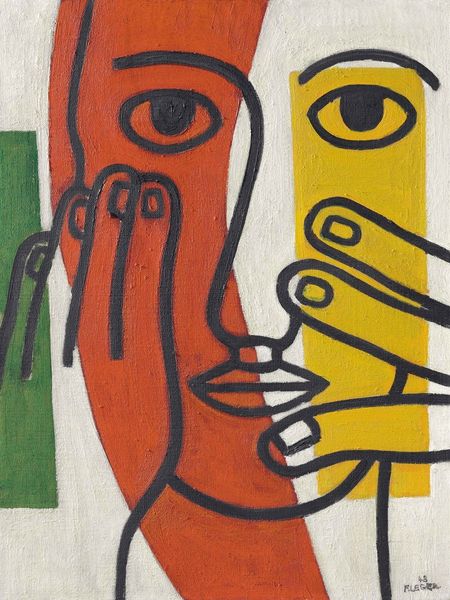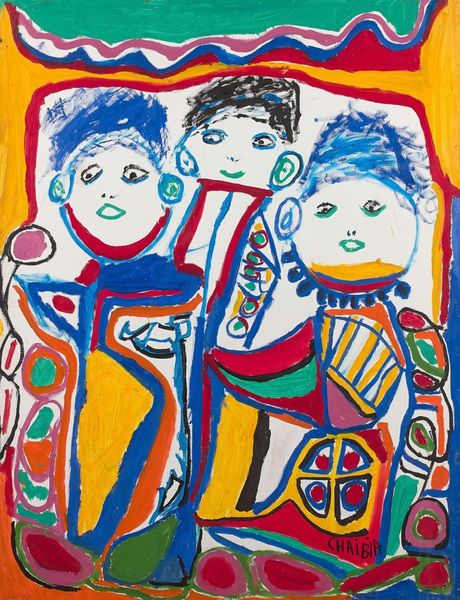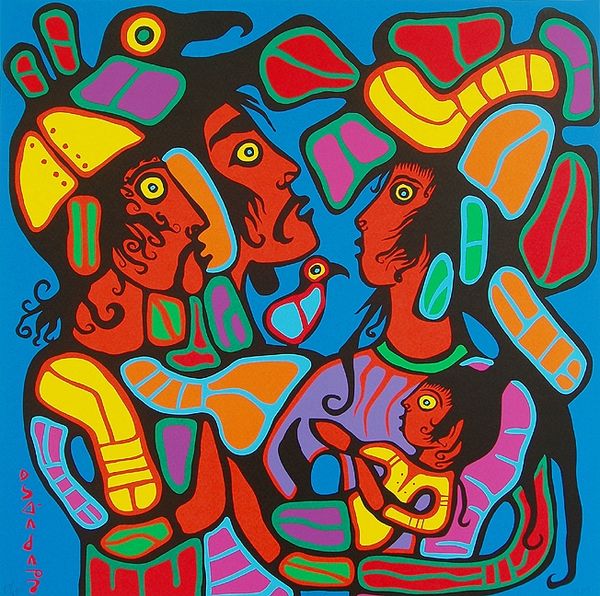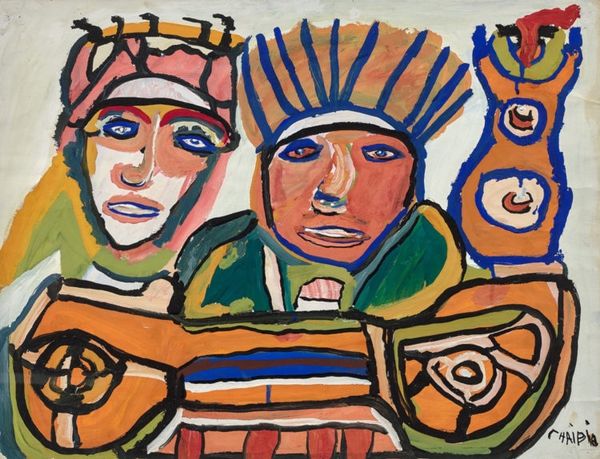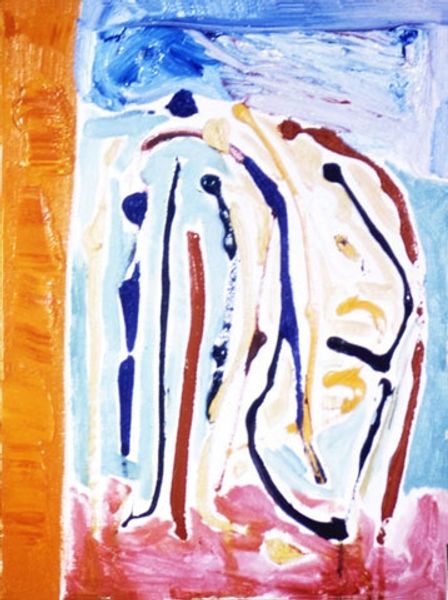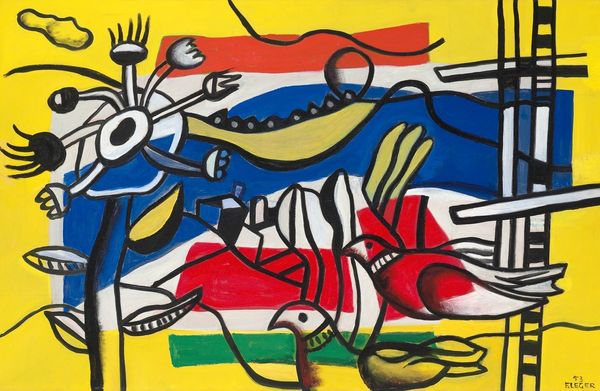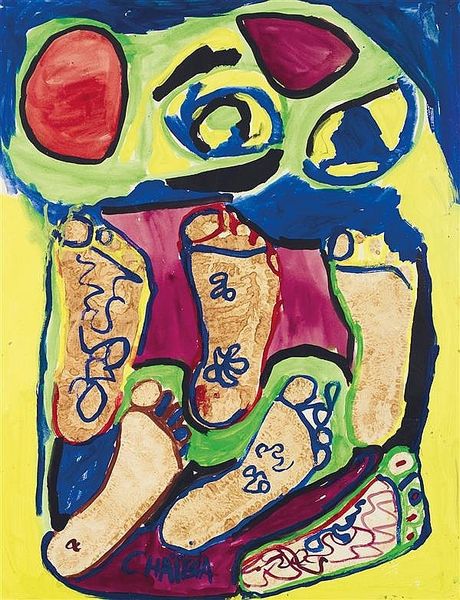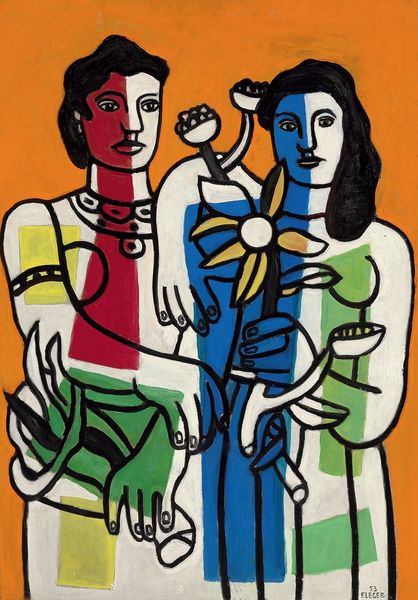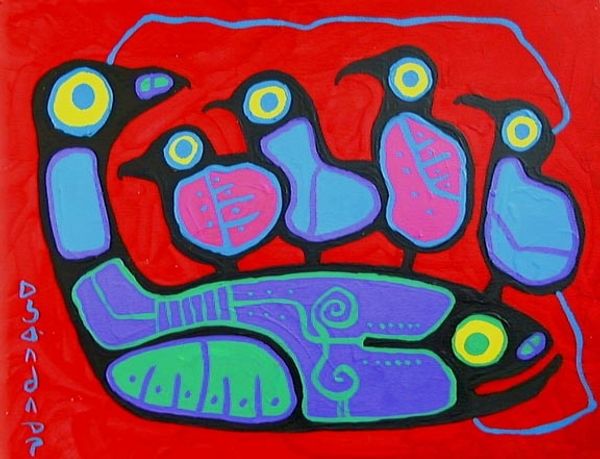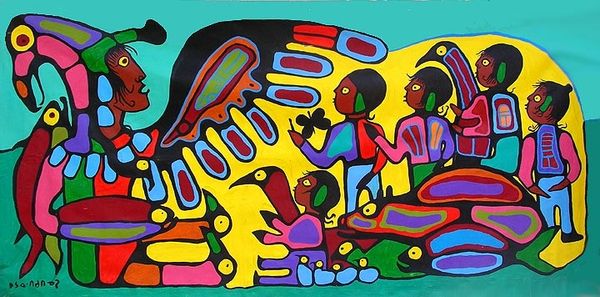
Copyright: Chaibia Talal,Fair Use
Curator: Standing before us is Chaibia Talal's "Personnage," painted in 1966 using acrylic. I find myself drawn to its almost confrontational directness. What are your initial impressions? Editor: They’re striking, aren't they? There’s a disquieting theatricality to them, a kind of folk-art masquerade, underscored by the vibrant colors. Curator: Indeed. The figures are simplified, bordering on abstraction, but somehow remain intensely human. The heavy black outlines lend them a kind of iconic quality. Considering that Chaibia was self-taught, coming from a rural background in Morocco, her immediate artistic intuition is so unique, isn't it? It brings me to the question of representation and identity. How do you see the role of this work within its socio-historical context? Editor: It’s fascinating that you mention her self-taught background because in the mid-20th century Moroccan art scene, largely dominated by male academic painters, Chaibia offered an entirely fresh, unfiltered perspective. This painting challenges the accepted traditions in painting and art criticism in this part of the world at the time. Curator: Absolutely. These almost mask-like faces seem to reflect archetypes or even ancestral spirits, carrying layers of cultural memory. Is there an inherent connection with folk traditions? Editor: The vibrant palette reminds me of Moroccan textiles, but the stylized forms of the figures – especially the tear like extension from each eye- socket – suggest a deep connection to the modern art movement as well. She successfully synthesizes indigenous traditions with modernism in the way she plays with line, shape, and the picture plane. This image serves as an interesting example of the negotiation between local cultural markers and foreign aesthetic styles in a postcolonial, developing country. Curator: That blend of indigenous visual vocabularies and elements of expressionism creates something genuinely original and profoundly impactful, don't you agree? I almost wonder, do you also perceive an aspect of cultural transmission or even perhaps an invitation to consider larger concerns? Editor: Precisely. And those deceptively simple lines really do carry considerable social, political, and historical weight. Looking at the faces again, one starts considering what has been witnessed, or been silent about, and how history weighs on society. It is this quality that, perhaps, transforms these striking characters into a poignant artwork. Curator: I completely agree. Editor: Indeed, these subjects certainly do linger in your mind.
Comments
No comments
Be the first to comment and join the conversation on the ultimate creative platform.

